Deiseldave is just a walking ency,enci, encae, encea, book of wisdom !!!
Wasn’t there an incident with a tanker on the M6 near Holms Chappel where a tanker was either leaking or it had crashed and it was leaking.
The driver didnt have a clue what was on board, but somtimes carried very bad stuff. The emergency services wouldnt go near it for hours, the road was closed most of the day they were having trouble finding someone who knew what was on board.
Turns out it was something harmless in the end.
Prob urban myth but someone told me thats what prompted the haz boards.
Kiowan:
Even in 1969 there’d still likely be references available to the accident, considering it was so horrific and on a motorway. Just the obvious thing being it happened in 1969 on the M6 near the M62 junction, but the M62 wasn’t started until 1971.
Even though the M62 wasnt built at the time people talking these days would still use it as a reference point so people would know where the incident happend.
I think older accidents and events are hard to come across, unless they were really serious. The diesel tanker crash on the m61 there is little mention of it on the internet.
Even the biggest crash on UK motorways involving the coach in 1985 gets little mention apart frorm a youtube video.
This video is distruburbing, not graphic but just what happend.
Kiowan:
While I’m not disupting that it’s taught in the ADR course, is there any evidence that it’s actually true?
OK Kiowan, you asked for evidence and seem to have trouble believing what’s been written so far, so I won’t waste my time by trying to convince you.
Here are some facts that you can check in your own way:
- The Consortium’s ADR course is approved and verified by the Scottish Qualifications Authority. You can ask them, if you want.
- People who have been taught the Consortium’s ADR course have seen the pic, they shouldn’t take much finding.
- Approx 50% of approved ADR providers subscribe to the Consortium’s ADR course, so it’s by far the most widely used ADR course in the UK. Do you honestly think that around 65 providers would choose a course, that’s nowhere near the cheapest available, if it wasn’t credible??
Kiowan:
Science teachers have a huge love of making up stories just to shock people, same goes for the army, anything where you get safety briefings.
I wouldn’t know about that mate, I certainly don’t make anything up when I teach, because it’s a serious subject. ![]()
![]() BTW, are you a conspiracy theorist?
BTW, are you a conspiracy theorist?
Kiowan:
Even in 1969 there’d still likely be references available to the accident, considering it was so horrific and on a motorway. Just the obvious thing being it happened in 1969 on the M6 near the M62 junction, but the M62 wasn’t started until 1971.
I’ll suggest that they re-write the course to include " on the M6, close to where the present junction with the M62 is, but at a point in time before the M62 was built."
![]() You can only fit so much pedantry on a PowerPoint slide.
You can only fit so much pedantry on a PowerPoint slide. ![]()
![]() Surely the OS map reference is nothing to the real point eh?
Surely the OS map reference is nothing to the real point eh?
Kiowan:
Then there’s the fact that afaik Oleum is yellow not clear, depending on concetration,
Then you might need to do some research, since transport law is different to the law governing end-users.
The law says it’s “clear,” because it’s not yellow enough to count as yellow for legal purposes IN TRANSPORT. ![]()
However, oleum appears as yellow OR clear on product sheets (MSDS) or when held up to the light in a clear test tube.
My information is taken from the International Maritime Dangerous Goods Code, current version 2006, which is used for the carriage of dangerous goods by ships WORLDWIDE.
The ‘stuff’ written correctly is called: UN 1831 SULPHURIC ACID, FUMING, 8 (6.1), PGI
In the IMDG Code 2006 Chapter 3.2 at column 17 for UN 1831 is:
Properties and observations
Colourless oily liquid, may be partly crystalized. Solution of varying quantities of sulphur trioxide in sulphuric acid. Reacts violently with water and organic material, generating heat. In the presence of moisture, highly corrosive to most metals. Toxic if swallowed, by skin contact or by inhalation. Causes severe burns to skin, eyes and mucous membranes.
In the same table, the information at columns 3 and 4 require the display of BOTH of the following labels:
Further requests for evidence of the truth of the above quote should be submitted to the International Maritime Organisation, who oversee such matters. ![]()
I chose to quote from IMDG, because it’s the only set of modal Regs that contains a physical description of the ‘stuff,’ please make of it what you will.
Kiowan:
at some concentrations it’s not even a liquid, it’s powder,
That’s true (see above) but how relevant is this to the topic??
Kiowan:
and I think that’s the form they’d use to transport it.
Errr… You might like to research that. ![]()
Kiowan:
It also starts fuming like crazy when it touches water or moisture so you’d see plumes of vapour bellowing out of where it was spilt.
Possibly correct, but it was a foggy day, but just maybe any vapour was indistinguishable from the fog… ![]()
Kiowan:
Maybe it is all true, but maybe it’s a seperate accident that’s instead been utilised for demonstrating the hazards of ADR.
Sorry mate, but I can only work with the material I was given. My quote in my other post above was attributed to the relevant source, so it wasn’t me who said so. ![]()
![]()
jj72:
… sure acids are bad, but you can in theory stay away from them in a spill, surely some of the class 6 crap (poisonous) is worse as it can be carried in the air - from memory any phenol is potentially very nasty gear?
Hi jj72, that’s quite true mate, but we shouldn’t forget about secondary, or even tertiary hazards.
A number of corrosives have toxicity as a secondary hazard, such as the oleum in the incident.
![]() Some other corrosives, as well as being toxic, are ALSO flammable.
Some other corrosives, as well as being toxic, are ALSO flammable. ![]()
Any and all risks must be clearly shown on documentation, and labelling on packages or Hazard warning panels on UK tankers. For international movements under ADR, the tanker marking system is quite different.
Paul:
I eventually was put through the ADR course at the time when the licence was a paper one that looked like a driving licence and lasted 5 years.
Hi Paul, They’re still exactly the same now mate. ![]()
Paul:
…they had now stopped putting it in drums and it was now in the 1 ton bags ( same as what you load with fertilizer or what comes from B&Q with sand in). Now I cant remember the classes of haz but I can remember that this stuff was in the " dangerous when wet " group.
Those bags are called a “flexible IBC” mate, and are perfectly legal for some of the lower danger dangerous goods, I’d guess at Packing Group III in this case, given that the ‘stuff’ was a solid.
Dangerous when wet is UN Class 4.3, here’s the label that should have been on the IBC for that class:

Paul:
Parked next to me on my passenger side was a German driver who had decided to sit in his passenger side smoking his head off and flicking the still burning butts out of the window. You can imagine what was going through my head …
I sure can mate. ![]()
Paul:
but I couldnt ask him to stop and explain why or me may have thought " I’ll phone the cops and he will get done and I will get tipped before him" so I had to hope for the best, after all I didnt know how much or for how long this stuff had been leaking and nothing had happened yet so fingers crossed but I didnt get a great deal of sleep that night.
Class 4.3s generally start being naughty when they come into contact with water. The most dangerous ones will disintegrate and explode fairly quickly if they come into contact with water. These real baddies are normally carried in very special packagings and are carried immersed in kerosene/paraffin to exclude any possible contact with water or moisture.
The ‘stuff’ you were carrying clearly wasn’t in the top bracket for degree of danger, so thet’s why it was legal to package your ‘stuff’ in a flexible IBC. In contact with snow and in such a cold ambient temperature, the chemical reaction with the water would have progressed very slowly indeed, if at all. That’s probably why you didn’t see anything happening.
Paul:
Once I was empty the fork truck driver got a brush and even swept out the powder from my trailer onto the floor, he then to my disbelief swept all the powder that was on the floor into the DRAIN.
![]()
![]() Then at least the inside of the drain got to be nice and clean after the reaction took place.
Then at least the inside of the drain got to be nice and clean after the reaction took place. ![]()
i was told about the M6 incident over 15 years ago on a haz course
last haz course i was on 6 years ago i was also told about an incident in spain?
a camp site or village and chemicals?
can DD verify ta
andy
think this is what your on about
andy187:
i was told about the M6 incident over 15 years ago on a haz course
last haz course i was on 6 years ago i was also told about an incident in spain?
a camp site or village and chemicals?can DD verify ta
andy
Hi andy187, Certainly mate, here’s the story:
The Los Alfaques Disaster is a truck road accident which happened on July 11, 1978 in Alcanar, near Tarragona, in Spain. A chemical truck with 25 tons of liquefied propylene, a highly flammable product, left the road and ended close to the Los Alfaques campsite, located between the road and the sea. After hitting a small building, the truck exploded in a 1000 C° fire ball, killing 217 and injuring more than 200 more, most of them vacationing foreigners.
The official inquiry determined that the truck, which left the Tarragona refinery one half hour earlier, was overloaded.
The source is ![]() HERE
HERE
codge123:
think this is what your on about
Hi codge123, yes mate that’s the one.
![]() and you beat me to the post.
and you beat me to the post. ![]()
![]()
Steve-o:
What’s the most dangerous stuff you can carry?
'fraid it doesn’t work like that Steve-o.
All 9 classes of dangerous goods can kill people, so obviously there’s no such thing as degrees of death.
The 9 classes are therefore EQUALLY as dangerous as each other, and should not be viewed as any kind of league table of danger. ![]()
Here they are:
UN Class 1 :arrow_right: 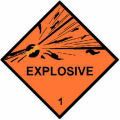..... UN Class 2 :arrow_right: 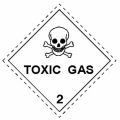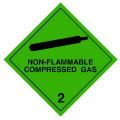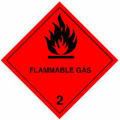 ..... UN Class 3 :arrow_right: 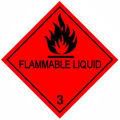 ..... UN Class 4 :arrow_right: 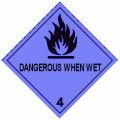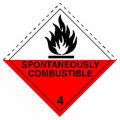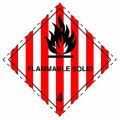 ..... UN Class 5 :arrow_right: 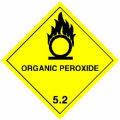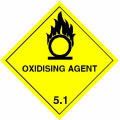 ...[NEW 5.2 LABEL :arrow_right: ]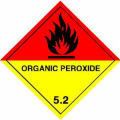 .... UN Class 6 :arrow_right: 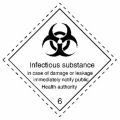 ..... UN Class 7 :arrow_right: 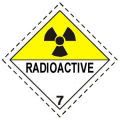 ..... UN Class 8 :arrow_right: 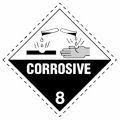 ..... UN Class 9 :arrow_right: 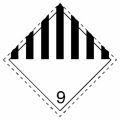dieseldave:
Steve-o:
What’s the most dangerous stuff you can carry?'fraid it doesn’t work like that Steve-o.
All 9 classes of dangerous goods can kill people, so obviously there’s no such thing as degrees of death.
The 9 classes are therefore EQUALLY as dangerous as each other, and should not be viewed as any kind of league table of danger.
every load has a death rating really, if it falls on you its gonn kill you if its still in the wagon ![]()
![]()
![]()
Giblsa:
every load has a death rating really, if it falls on you its gonn kill you if its still in the wagon

That’s very true mate. ![]()
Even if you’re wearing your hi-viz. ![]()
does anyone remember the petrol tanker at spaghetti junction, around 88-89 i think?
here is a link to the film about the fire in SPAIN
yella:
does anyone remember the petrol tanker at spaghetti junction, around 88-89 i think?
Indeed I do took em ages to rebuild the on ramp to the Aston expressway afterwards
i believe they can also set light to channel trains…
On the same subject…i thought hazardous was not allowed to travel on the chunnel…and had to use a specialist ferry instead…enlighten me please.
only ceratin products are allowed , and the list
is one that the euro tunnel aderes to,
only certain ADR-HAZ-IMDG GOODS ARE ALLOWED
on passsengers ferrys,.,the rest has to go by Freight
boats, that are tested for such loads, there are many restrictions
on movement of IMDG goods, and no ferry firm worth its salt
will break these rules, as the concequences are too high
when caught out,
dieseldave i’m suprised you’ve not mentioned the ethanol tanker that overturned on a roundabout at ellesmere port. the one that was on fire but the firebrigade who were stood only a few yard’s away from it did’nt know. because ethanol burn’s clear the firebrigade could’nt see it burning they just thought it had overturned it was only when the police helicopter flew above and put the heat sensor on that they realised. they only just managed to get away from it before it exploded.
p.s dave just a thought isn’t class 9 the worst. due to it being a mixture of crap so making it harder to deal with in an emergency situation

